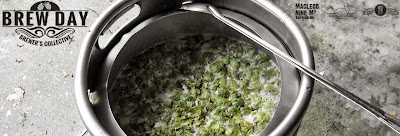I've drank a lot of canned beer in my day. The good old "dirty thirty" was a beer-run staple, and for good reasons - It only set you back about 20 bucks, you can shotgun 'em, and they don't break when you fall down. And smashing a can on your forehead never gets old, am I right?
But as I ventured into the world of craft beer, I left such crude containers behind. I mean, a metal can? Those are for soup and precooked meat products. Surely any beer worth it's weight in hops was too good for
cans, right?
Wrong.
The fact of the matter is cans have some distinct advantages over glass bottles. Are cans better than bottles for all intents and purposes? Certainly not. But there is no reason to turn your nose up at all canned beer. In fact, a lot of highly respected breweries are adding cans to their lineup, and here's why:
Durability.
Cans can venture a lot of places where glass dare not go. Going camping? Cans are better suited to pack in your rucksack than glass bottles. And easier to pack out as well - crush 'em up to save space and recycle them when you get home. A lot of public places don't allow glass bottles for safety reasons, so cans are your friend there, too. That's not to say cans are bulletproof, but at least you won't end up with shards of glass everywhere.
It's dark in there.
Light is an enemy of beer. Light breaks down the flavor compounds from hops, causing a "skunky" taste that might be familiar from drinking an old bottle of beer. While brown bottles are certainly better than clear (or green) at blocking out light, an opaque metal shield is the champ here. Some may say that cans are better at sealing out air (another enemy of beer), but I'll contest that a properly seated crown top does just as well, so it's a draw there.
No tools required.
Pretty much anyone can open a can, anywhere, any time. Those with closely trimmed fingernails may have a tougher time of it, but at least you won't be left searching for a bottle opener. I don't care if you can open a bottle with your lighter/ring/teeth or whatever else, and don't even get me started on twist-offs. Cans are easier.
They get the chills.
Glass is an excellent insulator, which may come in handy when it comes to keeping your beer cold as you drink it, but not so much when it comes to chilling it in a rush. Grabbing a sixer on the way to a cookout? The thin metal of a can will get cold in the fridge or a cooler of ice much faster than bottles.
Not-so-heavy lifting.
Cans can be packed, shipped, and distributed more efficiently, cutting costs and carbon emissions along the way. And for the consumer it's much nicer to take a trash bag full of lightweight cans to the return facility rather than heavy, loud, clunky bottles.
Bottles are great for their own reasons - you can see the beer, they stay colder longer, and there's an aesthetic quality and sense of ritual to pouring a perfect glass of beer from a bottle. Plus, it's a little hard to can homebrew. I enjoy both cans and bottles, and while I almost always pour bottled beer into a glass, I usually drink straight from a can. Just habit I guess, but for me cans represent a more casual way of drinking. Cans aren't so serious. Craft beer or not, it's hard to seem snobbish when you're drinking from a can. And there's something to be said about the intangible satisfaction that comes from taking a big swig from a cold can of beer on a hot Summer day.
Just don't smash it on your forehead.





